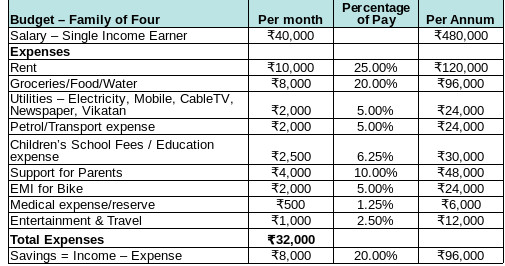Does India need a Sovereign Wealth Fund? (Part II)
Functioning of SWFs
Every SWF is like a fund house - they have their own investment offices, fund managers and asset managers. Each SWF also has its own mission, return requirements and investment horizon (akin to an individual's financial plan). SWFs by their very nature are net positive FDI (Foreign Direct Investment) countries. Note that net negative FDI countries cannot afford to have a SWF since they are cash starved and need overseas capital to spur infrastructure and industry development (like India, Indonesia etc). However the mode of operation of these SWFs are not very transparent due to which they have raised several key concerns such as affecting market dynamics and effecting undue influence on politics of other nations.
What about India?
India has not reached the position of a net positive FDI yet. Infact India is a net negative FDI nation, which means it continues to depend and receive FDI to develop the nation. India has not yet exhausted domestic investments to look at investing overseas - there is still so much to do within the country! India is not looking to invest abroad to generate income, but looking to invest within her territory to generate employment. However India is *not* capital starved!! There is plenty of capital available domestically, but they have not been channeled properly to development avenues due to poor governance.
How much money does India have?
India is a very resource rich country (which is why East India Company & several others came here 3 centuries ago!). India's PSU (Public Sector Undertaking) companies hold rich resources with the top-20 PSUs' net cash holding at Rs.1.6 Lac Crores ($26.67bn) as of 2013. In fact some of these companies such as NMDC, Coal India & ONGC have ZERO debt in their balance sheet. LIC is like a proxy SWF for India, holding Rs.17.69 Lac Crores ($295bn) in its assets under management. If we also include the amount of savings that Indians have in their EPF and PPF/NSC, it would equal LIC's AUM, taking the total to over $600bn - that is a good one third of India's $1.87Tn GDP (2013).
Conclusion
India attracted an FDI inflow of $35bn in 2014 and it is continuing to open up sensitive sectors such as defence, insurance and retail in the name of reforms when it has $26bn sitting idle in its PSUs. So, one wonders where does all the money go then? PSU cash is used for paying high dividends to the government for its (wasteful) expenditure. Similarly LIC's assets are used to support government's budget deficit. If only the taxman manages to plug the domestic black money leakages (estimated $380bn), the treasury would receive sustainable revenue flow which in turn the government must put to *good* use without having to issue (tons of) debt and force LIC to buy them (and LIC & other insurers in turn could stop selling low return policies to investors)!
Every SWF is like a fund house - they have their own investment offices, fund managers and asset managers. Each SWF also has its own mission, return requirements and investment horizon (akin to an individual's financial plan). SWFs by their very nature are net positive FDI (Foreign Direct Investment) countries. Note that net negative FDI countries cannot afford to have a SWF since they are cash starved and need overseas capital to spur infrastructure and industry development (like India, Indonesia etc). However the mode of operation of these SWFs are not very transparent due to which they have raised several key concerns such as affecting market dynamics and effecting undue influence on politics of other nations.
What about India?
India has not reached the position of a net positive FDI yet. Infact India is a net negative FDI nation, which means it continues to depend and receive FDI to develop the nation. India has not yet exhausted domestic investments to look at investing overseas - there is still so much to do within the country! India is not looking to invest abroad to generate income, but looking to invest within her territory to generate employment. However India is *not* capital starved!! There is plenty of capital available domestically, but they have not been channeled properly to development avenues due to poor governance.
How much money does India have?
India is a very resource rich country (which is why East India Company & several others came here 3 centuries ago!). India's PSU (Public Sector Undertaking) companies hold rich resources with the top-20 PSUs' net cash holding at Rs.1.6 Lac Crores ($26.67bn) as of 2013. In fact some of these companies such as NMDC, Coal India & ONGC have ZERO debt in their balance sheet. LIC is like a proxy SWF for India, holding Rs.17.69 Lac Crores ($295bn) in its assets under management. If we also include the amount of savings that Indians have in their EPF and PPF/NSC, it would equal LIC's AUM, taking the total to over $600bn - that is a good one third of India's $1.87Tn GDP (2013).
Conclusion
India attracted an FDI inflow of $35bn in 2014 and it is continuing to open up sensitive sectors such as defence, insurance and retail in the name of reforms when it has $26bn sitting idle in its PSUs. So, one wonders where does all the money go then? PSU cash is used for paying high dividends to the government for its (wasteful) expenditure. Similarly LIC's assets are used to support government's budget deficit. If only the taxman manages to plug the domestic black money leakages (estimated $380bn), the treasury would receive sustainable revenue flow which in turn the government must put to *good* use without having to issue (tons of) debt and force LIC to buy them (and LIC & other insurers in turn could stop selling low return policies to investors)!


Comments
Post a Comment